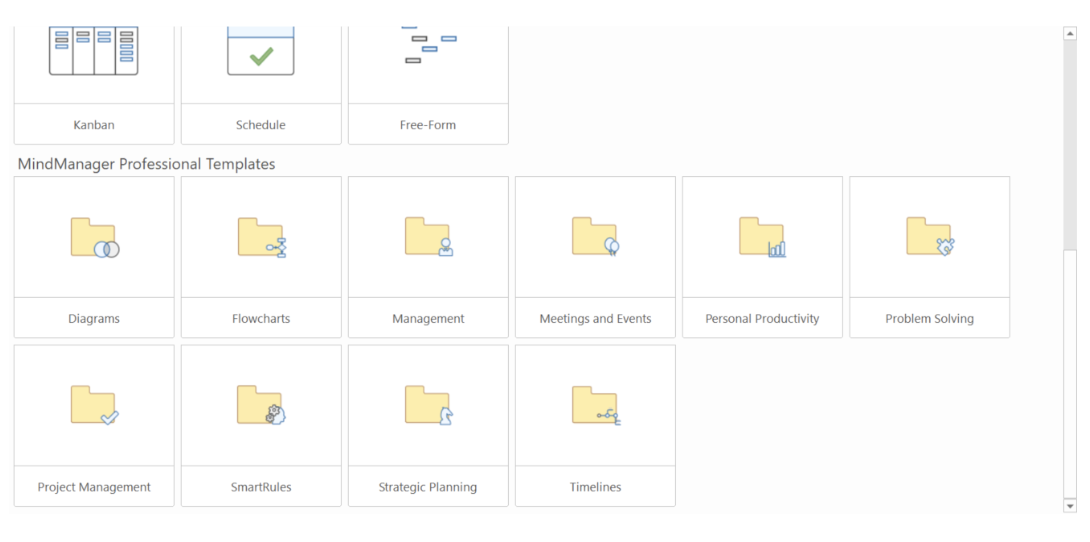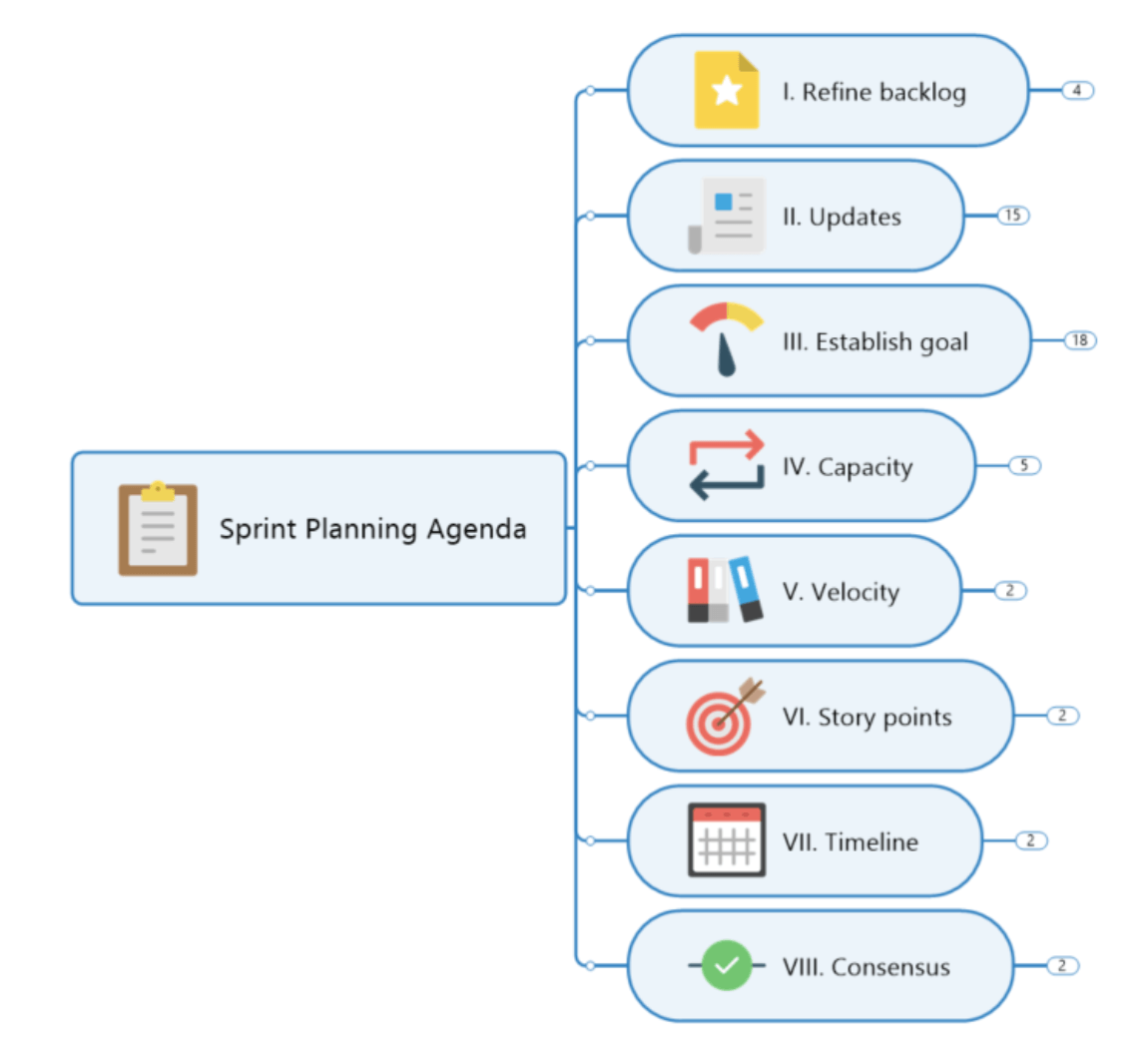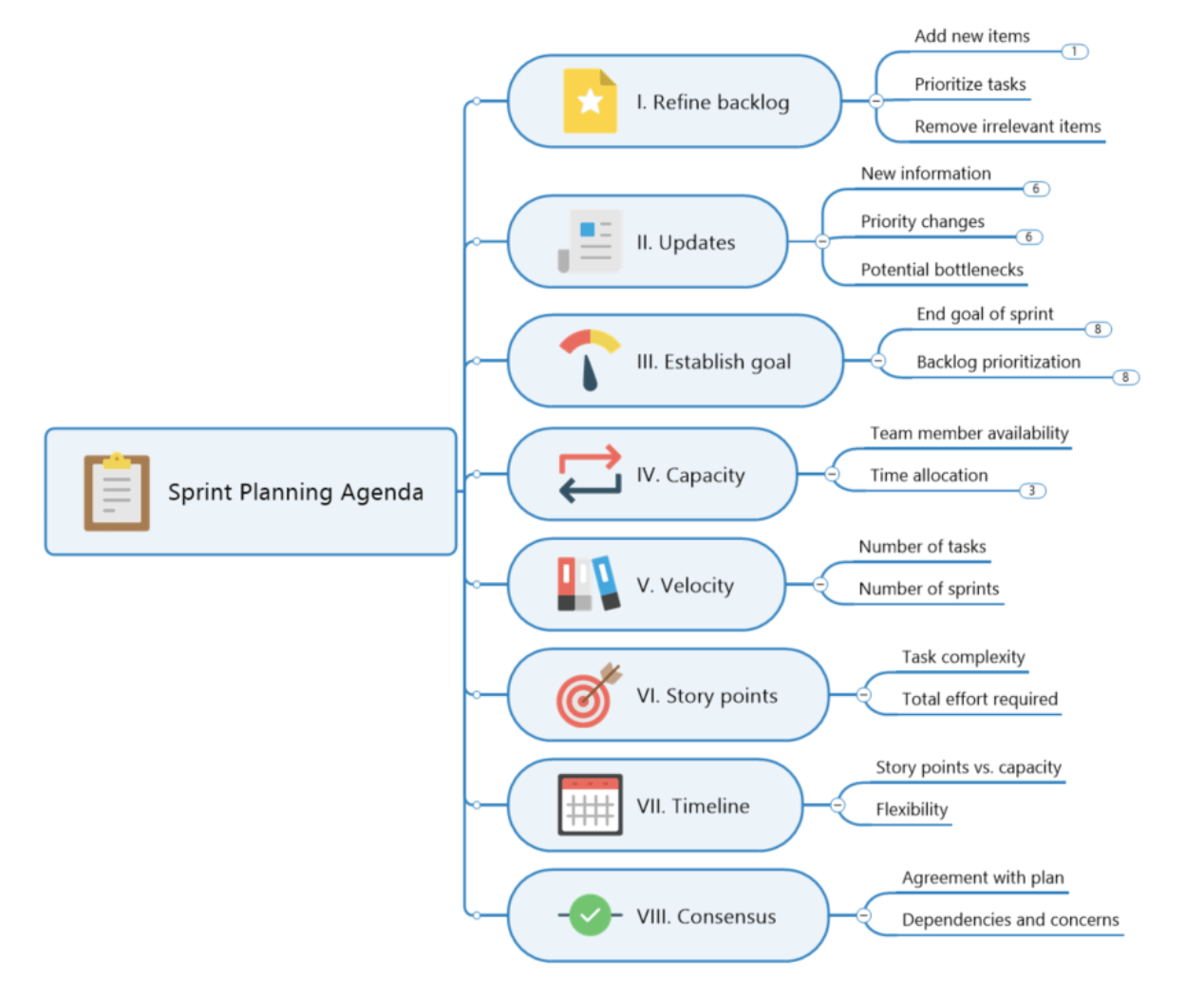Many teams and organizations leverage agile project management to improve project outcomes and processes. While there are many different types of agile methodologies such as scrum, lean software development, feature-driven development, and more, they share the common goals of increasing workflow efficiency and enabling teams to readily adapt to change.
Agile systems rely on work cycles known as iterations or sprints that break projects down into smaller, more manageable chunks. A sprint is a fixed length of time in which specific work tasks must be completed.
Each sprint kicks off with a sprint planning meeting. This is when the agile or scrum team defines the workload and goal for the upcoming sprint. When preparing for sprint planning, it’s important to first develop the sprint planning agenda.
This agenda is what keeps the meeting on track with its objectives, ensuring that team members are well-informed of the sprint goals, individual responsibilities, the timeline for completion, and delivery of the sprint.
In this article, we will discuss how to achieve the greatest results from a sprint planning agenda, as well as the steps necessary for holding effective sprint planning meetings.
Elements of a sprint planning agenda
Before you initiate a planning meeting, be sure to address the following key steps in your sprint planning agenda:
Refine the backlog. Review the items in the backlog to prioritize the best ones to work on during the upcoming sprint. This is also an opportunity to add new items, remove items that are no longer relevant, and reassess the relative prioritization of items on the backlog.
Address new or changed information. Agile project management is based on the assumptionassumes that as a project develops, circumstances will change. If there are any factors that could impact the sprint workflow, be sure everyone has the necessary details to plan and respond accordingly.
Establish the sprint goal. What do you want to achieve by the end of the sprint? Defining the sprint goal brings clarity to team members as well as project stakeholders. The sprint goal also helps identify which items from the backlog to add to the sprint.
Assess capacity. The availability of team members to handle the workload is known as its capacity. The team’s capacity is informed by who is available to work on the sprint and the amount of time they can devote to the sprint goal.
Determine velocity. Velocity informs how many backlog items the team should work on in the sprint. By understanding the speed at which the team completes tasks, you can identify how many sprints it will take to deliver the project.
Build story points. Story points act as a unit of measurement of a task’s complexity. This helps teams estimate the total effort required to achieve the sprint goal. Story points are considered effort estimates, which means a task with two story points will take twice as much effort as a task with one story point.
Estimate the timeline. By comparing the story points against each team member’s capacity and skillsets, you can estimate how long it will take to complete each assigned task. This informs the timeline for the sprint, which should be flexible and able to accommodate changes based on new information or modified requirements.
Achieve consensus. Everyone on the project team should be in agreement with the sprint plan. Use this meeting time to confirm any dependencies, address assumptions or concerns, and ensure that the team is confident in their ability to meet the sprint goal.
How to use your sprint planning agenda
While planning is good, you don’t want to spend so much time on meetings that it impacts your ability to get other work done. According to the Scrum Guide, a month-long sprint should have a planning time of no more than eight hours. Shorter sprints will have even shorter planning times, such as one to two hours of sprint planning for a two-week sprint.
Your sprint planning agenda will guide the meeting, ensuring that team members are focused on the most important aspects of sprint planning. The objective of a sprint planning meeting is to discuss and reach consensus on what items to work on as part of the next sprint.
Use the agenda to help everyone move through the various topics of discussion without getting bogged down trying to identify and estimate every possible task.
Sprint planning benefits
Sprint planning meetings help teams reach a shared understanding of what will be worked on during an upcoming sprint and how the work will be distributed among team members. By keeping the team’s interactions at the center of the project process, organizations are better positioned to achieve high-quality results.
Additional benefits of using a sprint planning agenda to facilitate sprint planning processes include:
Enhanced communication. The sprint planning meeting is an ideal time for team members to discuss important aspects of the project. This creates the opportunity to ask questions, provide feedback, and assess how much work they can complete.
Realistic goal setting. Holding a sprint planning meeting gives the team a chance to discuss how long a project might take based on everyone’s capacity to take on tasks. This prevents teams from setting unachievable goals because everyone can contribute insights as to how much work can realistically be accomplished within the sprint before it begins.
Task prioritization. Sprint planning helps the team prioritize the most important items in the backlog, which are then broken down into smaller tasks for a more efficient workflow. Task prioritization ensures that team members select, work on, and deliver the most important requirements first.
Effective teamwork. The sprint planning meeting involves all members of the project team, ensuring everyone works together to create productive sprints. This encourages productive teamwork based on clear communication and alignment around a shared goal.
How to create a sprint planning agenda in MindManager
There are many ways to create a sprint planning agenda, such as spreadsheets and whiteboards. However, when you use a visualization solution like MindManager®, you can optimize sprint planning using customizable templates. (Of course, you can always create your own template from scratch.)
Start by opening MindManager and clicking “New” in the navigation menu. Then, scroll down to the MindManager professional templates and open the “Meetings and Events” folder.

Select the template you want to use. For this example, we will modify the Agenda map. Click “Create Map” to get started.

Then, use MindManager’s drag-and-drop functionality to add the eight steps needed to create a sprint planning agenda.

To keep your agenda free of clutter, you can easily hide supplemental information, such as notes and details related to the steps. For a more in-depth view, simply click on the sub-topics to expand them.

When viewing or working on the sprint planning agenda, team members can collaborate in real time across platforms thanks to MindManager’s co-editing features. Updates and edits occur in real-time, which reflects automatically across all MindManager platforms. This ensures that teams can see feedback and suggestions right away, adjusting tasks and plans as needed.
Projects of all sizes require planning for optimal results. A sprint planning agenda keeps team members organized and focused on key elements of an upcoming sprint. This agenda strengthens your sprint planning processes by ensuring all expectations, goals, and other important criteria are defined and agreed upon among the project team members.

